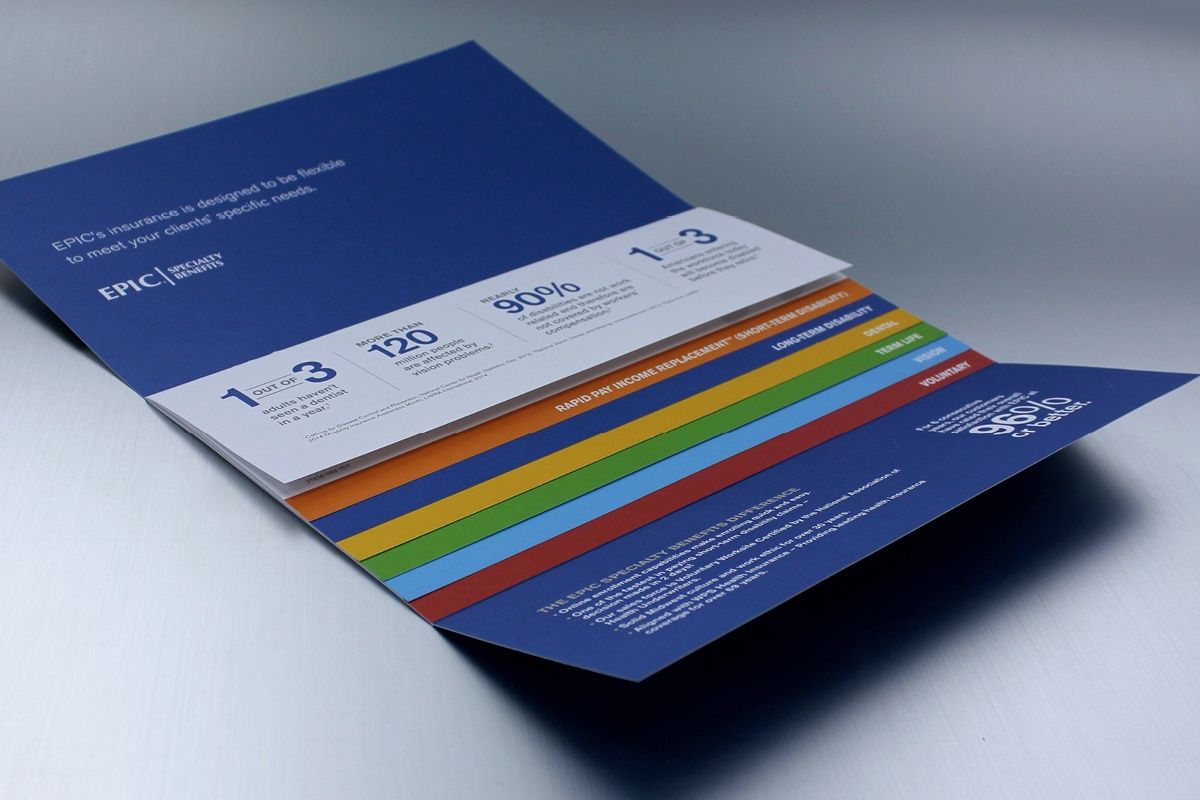Pam mae'r rhan fwyaf o lyfrau'n cael eu hargraffu yn Tsieina?
Yn yr economi fyd-eang heddiw, mae argraffu llyfrau wedi dod o hyd i ateb cost-effeithiol sy'n cael ei yrru gan ansawdd yn Tsieina fwyfwy. Er bod cwmnïau cyhoeddi mawr wedi elwa ers amser maith o argraffu dramor, mae mwy o hunan-gyhoeddwyr bellach yn darganfod manteision allanoli eu hanghenion argraffu i Tsieina. Mae'r canllaw hwn yn archwilio pam mae llawer o gyhoeddwyr yn dewis Tsieina, y manteision economaidd, ansawdd argraffu Tsieineaidd, a'r ystod o opsiynau addasu sydd ar gael ar gyfer creu llyfrau unigryw o ansawdd uchel. Byddwn hefyd yn tynnu sylw at heriau posibl ac yn ateb cwestiynau cyffredin sydd gan hunan-gyhoeddwyr cyn penderfynu ai argraffu yn Tsieina yw'r dewis cywir iddyn nhw.
Tabl Cynnwys
1. Tueddiad Cynyddol Argraffu Llyfrau yn Tsieina
Mae'r diwydiant cyhoeddi llyfrau wedi gweld symudiad graddol tuag at gwmnïau argraffu Tsieineaidd dros yr ychydig ddegawdau diwethaf. Mae cyhoeddwyr mawr wedi arwain y symudiad hwn, ac mae hunan-gyhoeddwyr llai wedi dilyn yr un peth gan eu bod yn cydnabod y manteision niferus a gynigir gan argraffu llyfrau Tsieineaidd. Mae costau cynhyrchu isel, llafur medrus, a'r gallu i drin rhediadau print bras yn gwneud Tsieina yn opsiwn cymhellol. Yn ogystal, mae datblygiadau technolegol wedi caniatáu i gwmnïau argraffu Tsieineaidd fodloni safonau ansawdd rhyngwladol a chynnig ystod drawiadol o opsiynau addasu. Mae'r cyfuniad hwn o ansawdd, fforddiadwyedd a hyblygrwydd wedi gwneud Tsieina yn lleoliad dewisol ar gyfer cyhoeddwyr ledled y byd.
2. Manteision Cost Argraffu Llyfrau yn Tsieina
I'r rhan fwyaf o hunan-gyhoeddwyr, cyllideb yw'r brif ystyriaeth. Mae argraffu llyfrau yn Tsieina yn aml yn costio 40% yn llai nag yn yr Unol Daleithiau neu Ewrop. Mae sawl ffactor yn cyfrannu at y gostyngiad sylweddol hwn mewn costau:
-
Costau Llafur Is: Mae marchnad lafur Tsieina yn galluogi costau cynhyrchu is, gan ganiatáu i gwmnïau ddarparu gwasanaethau argraffu ar gyfraddau cystadleuol iawn.
-
Defnyddiau Crai Doreithiog: Gyda mynediad lleol i ddeunyddiau fel papur, mae argraffwyr Tsieineaidd yn cadw costau deunydd yn isel. Yn ogystal, mae ffioedd mewnforio ar gyfer cyflenwadau hanfodol eraill yn cael eu lleihau.
-
Darbodion Maint: Mae ffatrïoedd Tsieineaidd yn aml yn trin archebion swmp yn effeithlon, gan leihau costau fesul uned yn sylweddol, yn enwedig ar gyfer rhediadau print mwy.
Mae’r manteision cost hyn yn galluogi cyhoeddwyr, yn enwedig hunan-gyhoeddwyr a busnesau bach, i wneud y mwyaf o’u cyllidebau a chynnig llyfrau am bris cystadleuol yn eu marchnadoedd.
3. Sicrhau Argraffu Llyfr o Ansawdd Uchel yn Tsieina
Mae ansawdd yn aml yn bryder mawr i awduron a chyhoeddwyr sy'n ystyried argraffu dramor. Yn ffodus, mae llawer o gwmnïau argraffu Tsieineaidd yn gweithredu gyda pheiriannau uwch sy'n debyg i safonau Gogledd America. Mae'r cynhyrchiad hwn o ansawdd uchel yn sicrhau bod y cynnyrch terfynol yn bodloni neu'n rhagori ar ddisgwyliadau. Yn ogystal:
-
Offer o'r radd flaenaf: Mae argraffwyr Tsieineaidd yn aml yn buddsoddi mewn peiriannau blaengar sy'n caniatáu ar gyfer argraffu a rhwymo manwl gywir.
-
Gweithlu Medrus: Mae gweithwyr yn y cyfleusterau hyn wedi'u hyfforddi i gynnal lefel uchel o fanylion a chywirdeb, gan arwain at destun crisp, lliwiau bywiog, a rhwymiadau gwydn.
Mae'r ymroddiad hwn i ansawdd wedi helpu i chwalu'r myth bod argraffu “cost isel” yn Tsieina yn cyfateb i ansawdd isel. Mae llawer o gyhoeddwyr yn adrodd boddhad â gwydnwch ac apêl weledol eu llyfrau printiedig Tsieineaidd.
4. Opsiynau Addasu ar gyfer Llyfrau a Argraffwyd yn Tsieina
Mae addasu yn ffactor pwysig i lawer o awduron a chyhoeddwyr. Mae adnoddau ac arbenigedd helaeth Tsieina mewn argraffu yn caniatáu ar gyfer opsiynau addasu amrywiol:
-
Arddulliau Argraffu: Mae opsiynau digidol, gwrthbwyso ac argraffu sgrin ar gael i gyd-fynd ag anghenion eich llyfr.
-
Dewisiadau Rhwymo a Gorchudd: Mae clawr caled, clawr meddal, ac opsiynau rhwymo unigryw ar gael yn eang. Gall gorchuddion wedi'u teilwra gynnwys gorffeniadau sgleiniog neu matte, boglynnu a dyluniadau arbennig.
-
Ansawdd Papur: O bapur sgleiniog i bapur heb ei orchuddio, mae argraffwyr Tsieineaidd yn cynnig sawl math o bapur, gan alluogi cyhoeddwyr i ddewis y ffit orau ar gyfer eu prosiect.
Mae'r galluoedd addasu hyn yn caniatáu ar gyfer prosiectau llyfrau amrywiol, o lyfrau bwrdd coffi pen uchel i nofelau clawr meddal fforddiadwy.
5. Heriau Argraffu Llyfrau yn Tsieina
Er bod y manteision yn nodedig, mae heriau i’w hystyried hefyd:
-
Amseroedd Cludo a Dosbarthu: Yn dibynnu ar y cyrchfan, gall danfon gymryd wythnosau oherwydd gofynion cludo rhyngwladol. Gall y tollau hefyd ychwanegu oedi, felly mae cynllunio ymlaen llaw yn hollbwysig.
-
Rhwystrau Cyfathrebu: Gall gwahaniaethau iaith weithiau greu camddealltwriaeth mewn manylebau, felly gall gweithio gyda chynrychiolydd dwyieithog neu frocer argraffu dibynadwy fod yn fuddiol.
-
Rheoli Ansawdd: Gall sicrhau ansawdd cyson ar gyfer rhediadau print bras fod yn heriol. Anogir cyhoeddwyr i ofyn am brintiau sampl cyn ymrwymo i archeb lawn i wirio safonau ansawdd.
Mae deall yr heriau hyn yn helpu cyhoeddwyr i wneud dewis gwybodus a pharatoi ar gyfer rhwystrau posibl wrth argraffu yn Tsieina.
6. Ystyriaethau Amgylcheddol ar gyfer Argraffu yn Tsieina
Wrth i ymwybyddiaeth amgylcheddol dyfu, mae llawer o gyhoeddwyr yn blaenoriaethu arferion argraffu ecogyfeillgar. Mae argraffwyr Tsieineaidd yn darparu ar gyfer y dewisiadau hyn yn gynyddol trwy ddefnyddio papur wedi'i ailgylchu, inciau sy'n seiliedig ar soia, a dulliau cynhyrchu cynaliadwy. Dyma sut maen nhw'n cwrdd â'r safonau hyn:
-
Defnyddio Deunyddiau wedi'u Hailgylchu: Mae llawer o argraffwyr yn cynnig opsiynau papur wedi'i ailgylchu, gan apelio at gyhoeddwyr eco-ymwybodol.
-
Defnydd Effeithlon o Ynni: Mae ffatrïoedd yn aml yn defnyddio peiriannau ynni-effeithlon i leihau allyriadau.
-
Ardystiadau: Mae rhai argraffwyr Tsieineaidd yn cael ardystiadau gan sefydliadau amgylcheddol rhyngwladol, megis FSC (Cyngor Stiwardiaeth Coedwigoedd), gan sicrhau cyhoeddwyr arferion cynaliadwy.
Mae'r symudiad hwn tuag at argraffu cynaliadwy yn gwneud argraffu Tsieineaidd yn opsiwn deniadol i gyhoeddwyr sy'n ymwybodol o'r amgylchedd.
Casgliad
Mae argraffu llyfrau yn Tsieina yn cynnig datrysiad fforddiadwy o ansawdd uchel ar gyfer hunan-gyhoeddwyr a chyhoeddwyr sefydledig fel ei gilydd. Gydag opsiynau addasu uwch, arferion sicrhau ansawdd cadarn, ac arbedion cost sylweddol, mae cwmnïau argraffu Tsieineaidd wedi ennill eu lle fel dewis i'r diwydiant cyhoeddi byd-eang. Drwy ddeall yr heriau a’r manteision posibl, gall cyhoeddwyr wneud penderfyniad gwybodus a manteisio ar yr adnoddau sydd ar gael ar gyfer eu taith argraffu llyfrau.
Cwestiynau Cyffredin
C1. A yw argraffu llyfrau yn Tsieina yn addas ar gyfer archebion mawr yn unig?
A: Na, mae llawer o argraffwyr Tsieineaidd yn darparu ar gyfer rhediadau print llai, yn enwedig gyda thechnoleg argraffu digidol, sy'n gost-effeithiol ar gyfer rhediadau byr.
C2. Sut alla i sicrhau rheolaeth ansawdd wrth argraffu yn Tsieina?
A: Mae gofyn am samplau, pennu safonau ansawdd clir, a gweithio gyda broceriaid neu gynrychiolwyr profiadol yn helpu i sicrhau ansawdd cyson.
C3. A oes costau cudd wrth argraffu llyfrau yn Tsieina?
A: Yn ogystal â'r gost argraffu, byddwch yn ymwybodol o drethi cludo, tollau a mewnforio posibl. Gall trafod y ffactorau hyn gyda'ch argraffydd cyn dechrau atal treuliau annisgwyl.
Argraffu Llyfr
Cynhyrchion Newydd
Blog Diwethaf

Manteision Gwasanaethau Argraffu Llyfrau Proffesiynol
Os ydych chi'n plymio i hunan-gyhoeddi, un o'ch prif bryderon fydd dod o hyd i opsiynau darbodus ar gyfer argraffu llyfrau

Pam mae pobl yn hoffi llyfrau clawr caled?
Os ydych chi'n plymio i hunan-gyhoeddi, un o'ch prif bryderon fydd dod o hyd i opsiynau darbodus ar gyfer argraffu llyfrau

Faint Mae'n ei Gostio i Argraffu Llyfr?
Mae hunan-gyhoeddi wedi dod yn ddewis delfrydol yn gynyddol i awduron a chrewyr cynnwys sydd am gadw rheolaeth dros eu gwaith o'r creu i'r gwerthiant. Yn wahanol i gyhoeddi traddodiadol,

Pa wlad Yw'r Rhataf i Argraffu Llyfrau?
Gall dewis ble i argraffu llyfr fod yn benderfyniad mawr, yn enwedig i'r rhai sydd am gydbwyso cost, ansawdd a chyfleustra.
Cysylltwch â Ni
- +86 13946584521
- info@booksprinting.net
- 8:00 - 22:00 (Llun - Sul)
Tagiau
Sylwadau
Blog Cysylltiedig
Dewch o hyd i'r tueddiadau diweddaraf a gwybodaeth gyffredin mewn busnes argraffu llyfrau.

Faint Mae'n Gostio Argraffu Llyfr Lliwio
Ydych chi'n artist neu'n awdur sy'n awyddus i drawsnewid eich syniad llyfr lliwio creadigol yn gynnyrch diriaethol?

Beth Yw Pwrpas Argraffu Llyfrau?
Wrth greu llyfr plant, mae pob elfen o bwys - yn enwedig y dewis o bapur. Gall dewis y math cywir o bapur godi golwg llyfr,

Pam Mae Argraffu Llyfrynnau'n Barod yn Offeryn Marchnata Pwerus i'ch Busnes
Ym myd marchnata digidol a datblygiadau technolegol sy'n esblygu'n barhaus, gall ymddangos bod dulliau marchnata traddodiadol fel argraffu llyfrynnau yn colli eu perthnasedd.

Dewis y Ffatri Argraffu Llyfr Cywir yn Tsieina
Ydych chi'n ddarpar awdur neu'n hunan-gyhoeddwr sy'n awyddus i ddod â'ch gwaith llenyddol yn fyw? Mae dewis y ffatri argraffu llyfrau cywir yn gam hanfodol a all ddylanwadu'n sylweddol ar ansawdd a llwyddiant eich cyhoeddiad.





